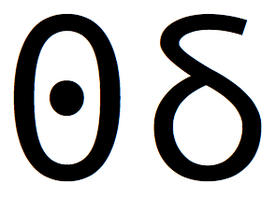Creating the habit of food weighing
Replies
-
That sounds helpful.
I was also thinking of zero-ing out my scale with my lunch tupperware on it, then magic markering the added weights for each thing that goes into it? (ie - broccoli, chicken, rice)
Another note, I have read that it's best to weigh your meat raw. How do you manage to do this if you're bulk meal prepping? I get all my chicken breasts mixed up like a mom with triplets!
I think if I were bulk prepping, I'd probably make a recipe for ALL the ingredients with their total weights (including raw meat, etc) then set the recipe to be 4 or 5 (or whatever is appropriate) servings. Each day may not be quite the same because of the way things are cut or divided, but it will average out over the week. Does that make sense?0 -
Definitely following, thanks!0
-
@ncfitbit - I learned something today. I often do what you do, and put a big plate on the scale to weigh things like chicken. But it covers up the numbers, and I have to look all around, shift the plate a bit to see the numbers. Small bowl under plate is absolute genius!!!
 I learned new stuff from this thread, too. Like the negative number weighing tip from @diannethegeek and using extra yogurt tub lids from @AnnPT77 . This is why I love MFP so much! 0
I learned new stuff from this thread, too. Like the negative number weighing tip from @diannethegeek and using extra yogurt tub lids from @AnnPT77 . This is why I love MFP so much! 0 -
cross2bear wrote: »Mine is always on the counter, ready to be used. Its a little Starfrit scale, inexpensive, from Canadain Tire. I too wondered about weighing on big plates but figured out a good technique, which has been mentioned above!
I have two. One on the counter for cooking and one on the table for measuring dinner portions.0 -
I am constantly "testing" my ability to serve a specific portion. It makes it gave more purpose for me.
For example, this week I've been really working on guessing what a tablespoon of mayo or sour cream looks like if I scoop it out with a spoon or knife. I pay attention to how it looks on the spoon, how big the blob looks once I put it in the bowl, etc. Obviously i still log in grams, but I found that my idea of a Tbsp was more like 1.75Tbsp. Yikes.
Yikes.
Last week I was doing it with peanut butter. In addition to looking at the spoon/knife carefully, I tried paying attention to the thickness once spread on my bread of toast (and yes, it looks different on toast because it melts). I started getting pretty good. I'm just using it as practice because I don't plan on weighing everything forever if I can help it.
I can eyeball chicken within about .5oz. I'm usually off by a dozen grams or less. But those add up when you only get 1200 calories a day.0 -
LaceyBirds wrote: »I keep a magnetic mini-dry erase board and magnetic holder dry-erase pen attached to my metal range-hood. It's right next to the counter with my pretty Ozeri scale where I prepare my food. That way I don't waste paper, since I write down weights every day. amazon.com/Quartet-ReWritables-Dry-Erase-Assorted-79201/dp/B003KGBGOA/ref=pd_sim_229_2?ie=UTF8&dpID=41VbZVlYQLL&dpSrc=sims&preST=_AC_UL160_SR160%2C160_&refRID=1E202EPW9RJAPJNNJ71M
I also use the dry erase markers for putting dates on leftover containers. Liquid chalk works well too.0 -
I am constantly "testing" my ability to serve a specific portion. It makes it gave more purpose for me.
For example, this week I've been really working on guessing what a tablespoon of mayo or sour cream looks like if I scoop it out with a spoon or knife. I pay attention to how it looks on the spoon, how big the blob looks once I put it in the bowl, etc. Obviously i still log in grams, but I found that my idea of a Tbsp was more like 1.75Tbsp. Yikes.
Yikes.
Last week I was doing it with peanut butter. In addition to looking at the spoon/knife carefully, I tried paying attention to the thickness once spread on my bread of toast (and yes, it looks different on toast because it melts). I started getting pretty good. I'm just using it as practice because I don't plan on weighing everything forever if I can help it.
I can eyeball chicken within about .5oz. I'm usually off by a dozen grams or less. But those add up when you only get 1200 calories a day.
That's what I was going to suggest. Before weighing something make a guess at its weight. Then check and see how close you were. Eventually you get good enough at guessing you won't need to weigh except for periodic spot checks. May as well learn something while you do it.
Also pay attention to the calorie levels of items. Weighing your lettuce and mustard and all is probably not worth your time in the long run. Though some people enjoy the feeling of precision and control. Just try to remember it's all estimates, regardless of if you weighed or not.0
This discussion has been closed.
Categories
- All Categories
- 1.4M Health, Wellness and Goals
- 398.3K Introduce Yourself
- 44.7K Getting Started
- 261K Health and Weight Loss
- 176.4K Food and Nutrition
- 47.7K Recipes
- 233K Fitness and Exercise
- 462 Sleep, Mindfulness and Overall Wellness
- 6.5K Goal: Maintaining Weight
- 8.7K Goal: Gaining Weight and Body Building
- 153.5K Motivation and Support
- 8.4K Challenges
- 1.4K Debate Club
- 96.5K Chit-Chat
- 2.6K Fun and Games
- 4.7K MyFitnessPal Information
- 17 News and Announcements
- 21 MyFitnessPal Academy
- 1.5K Feature Suggestions and Ideas
- 3.2K MyFitnessPal Tech Support Questions





